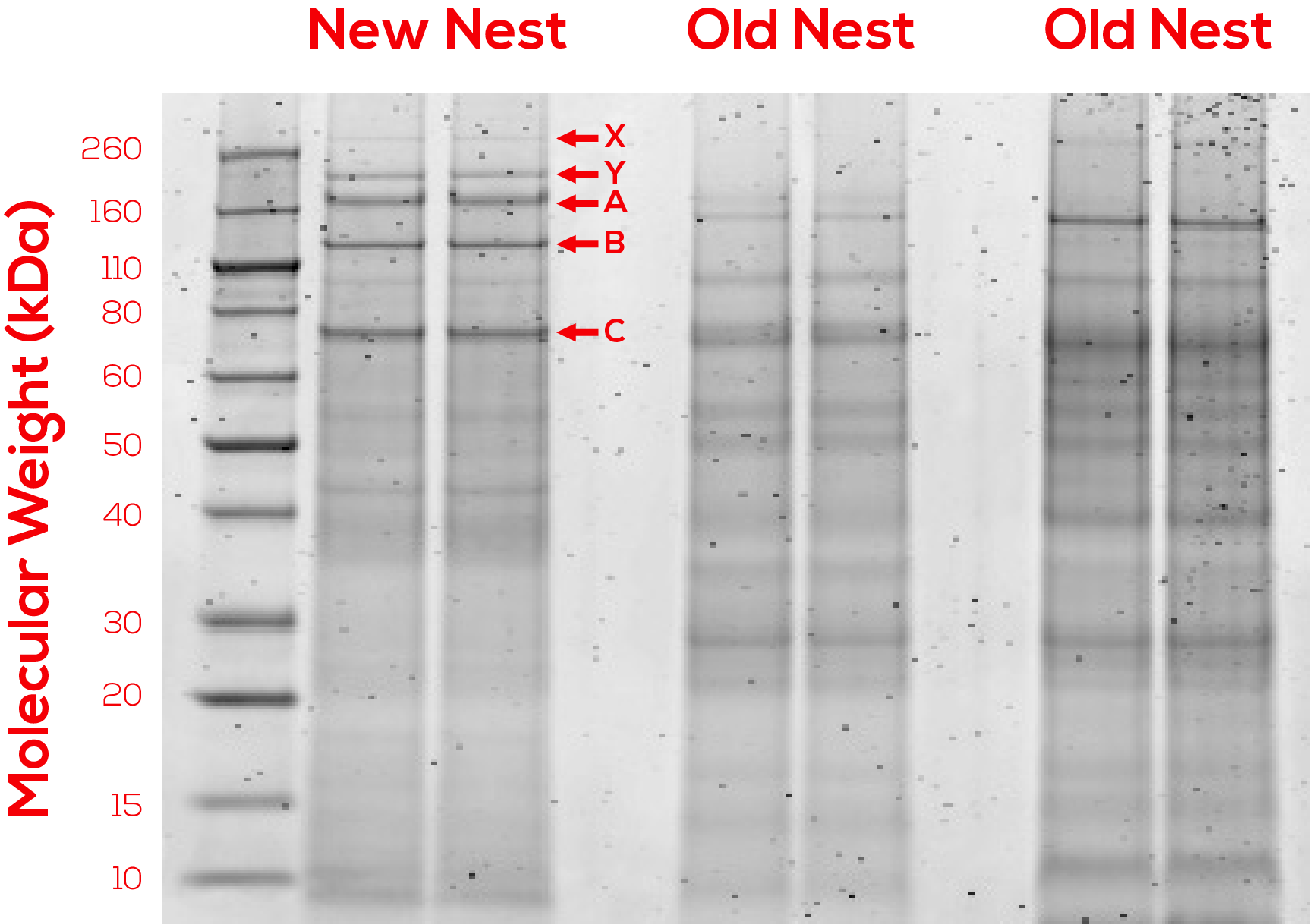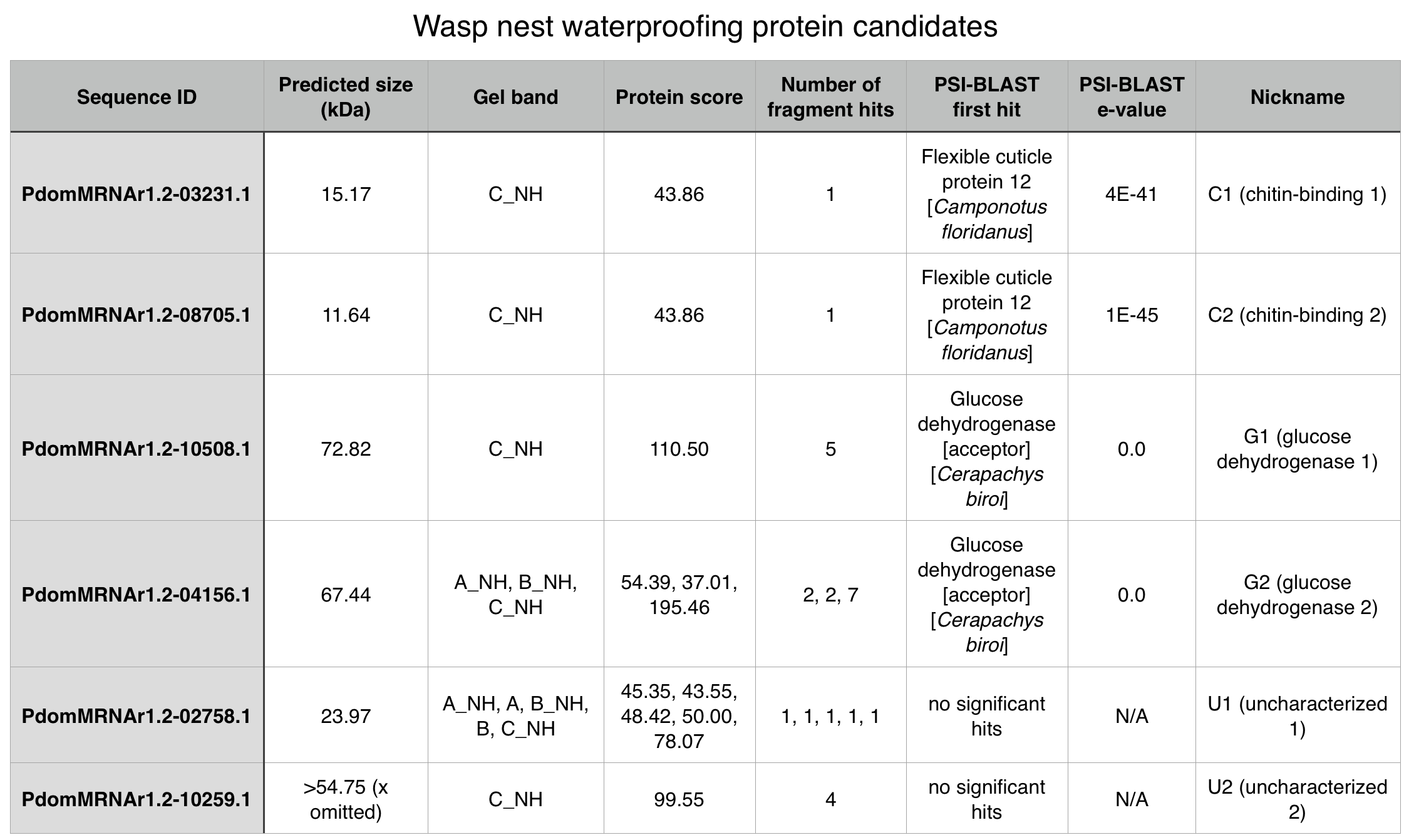Difference between revisions of "Part:BBa K1499402"
| Line 18: | Line 18: | ||
The full suite of proteins that we investigated, along with additional information about this protein is viewable in the following table (Figure 3). | The full suite of proteins that we investigated, along with additional information about this protein is viewable in the following table (Figure 3). | ||
| − | [[File:SBS_iGEM_Ian_Hull_wasp_candidate_gene_table.png|500px|thumb|center|<b>Figure 3.</b> | + | [[File:SBS_iGEM_Ian_Hull_wasp_candidate_gene_table.png|500px|thumb|center|<b>Figure 3.</b> <i>Polistes dominula</i> candidate nest waterproofing genes.]] |
<!-- --> | <!-- --> | ||
Revision as of 00:39, 25 October 2014
Uncharacterized wasp protein 1 (PdomMRNAr1.2-02758.1)
For more information on this project, visit our wiki: http://2014.igem.org/Team:StanfordBrownSpelman/Material_Waterproofing
Usage and Biology
Paper wasps of the genus Polistes are well known for their ability to construct nests composed of a tough, fibrous paper-like material. Studies have shown that the wasps build these nests by collecting cellulose from plants in the environment, chewing it up, and mixing with a protein-rich oral secretion that helps strengthen and cement the cellulose into nest paper[1]. Interestingly, these nests are also hydrophobic, which leads us to believe there may be a single protein in wasp saliva responsible for coating and waterproofing the nest paper.
In an attempt to identify and characterize this protein, we collected samples of nests constructed by Polistes dominula and extracted total protein. After resolving the protein extract on polyacrylamide gels, we excised dominant bands and sent them to the Wessel lab at Brown University for peptide mass fingerprinting.
After analyzing the peptide mass fingerprinting results, we selected this protein as a candidate for the hypothesized waterproofing protein, due to PSI-BLAST results returning no significant hits for similar proteins in the NCBI database, which lead us to believe this may be a novel wasp protein that has evolved to coat the nests.
The full suite of proteins that we investigated, along with additional information about this protein is viewable in the following table (Figure 3).
Sequence and Features
- 10COMPATIBLE WITH RFC[10]
- 12COMPATIBLE WITH RFC[12]
- 21COMPATIBLE WITH RFC[21]
- 23COMPATIBLE WITH RFC[23]
- 25INCOMPATIBLE WITH RFC[25]Illegal NgoMIV site found at 278
- 1000COMPATIBLE WITH RFC[1000]
References
1. Kudo, K et al. (2000) Amino acid composition of the protein in pre-emergence nests of a paper wasp, Polistes chinensis (Hymenoptera, Vespidae). Insectes soc. 47(4):371-375.



